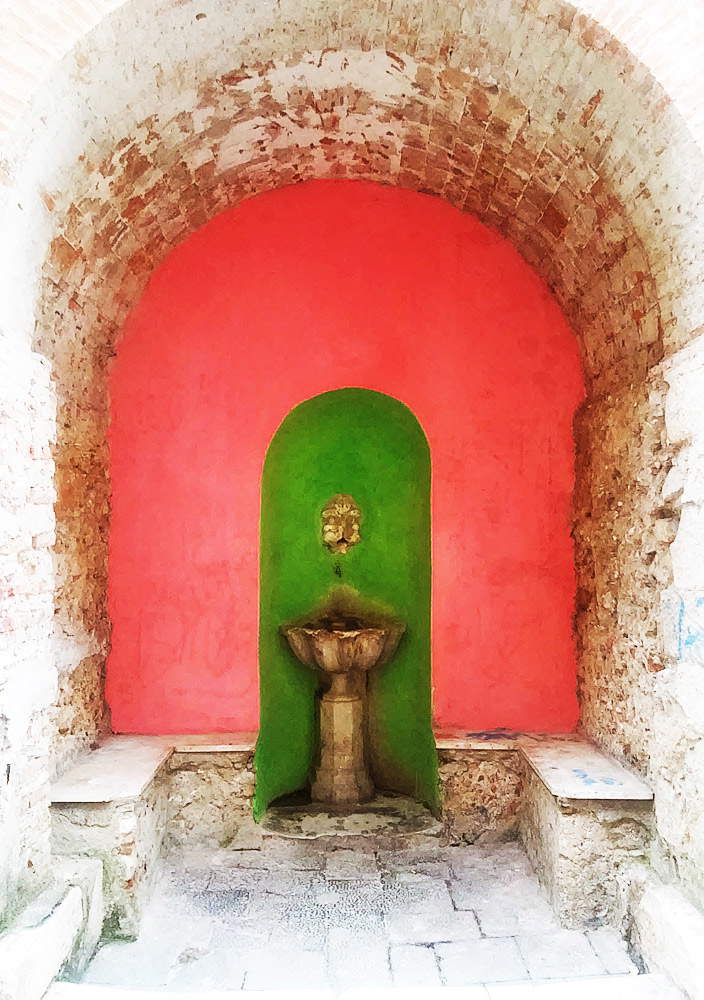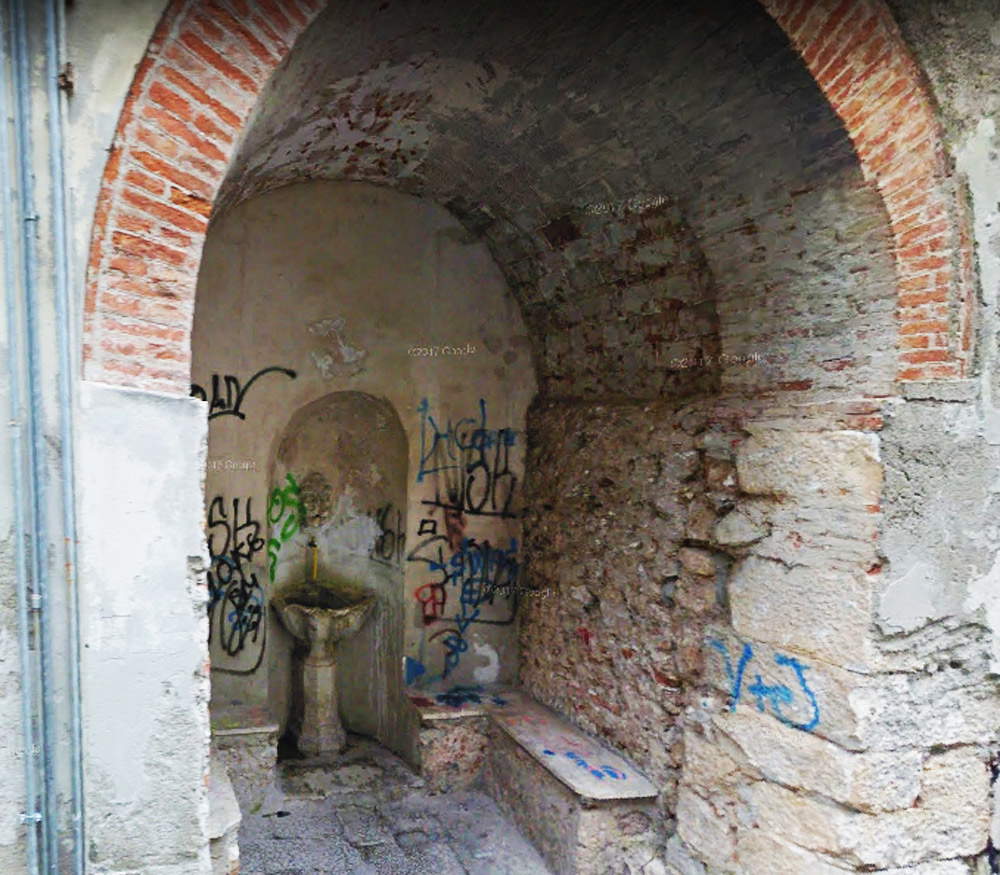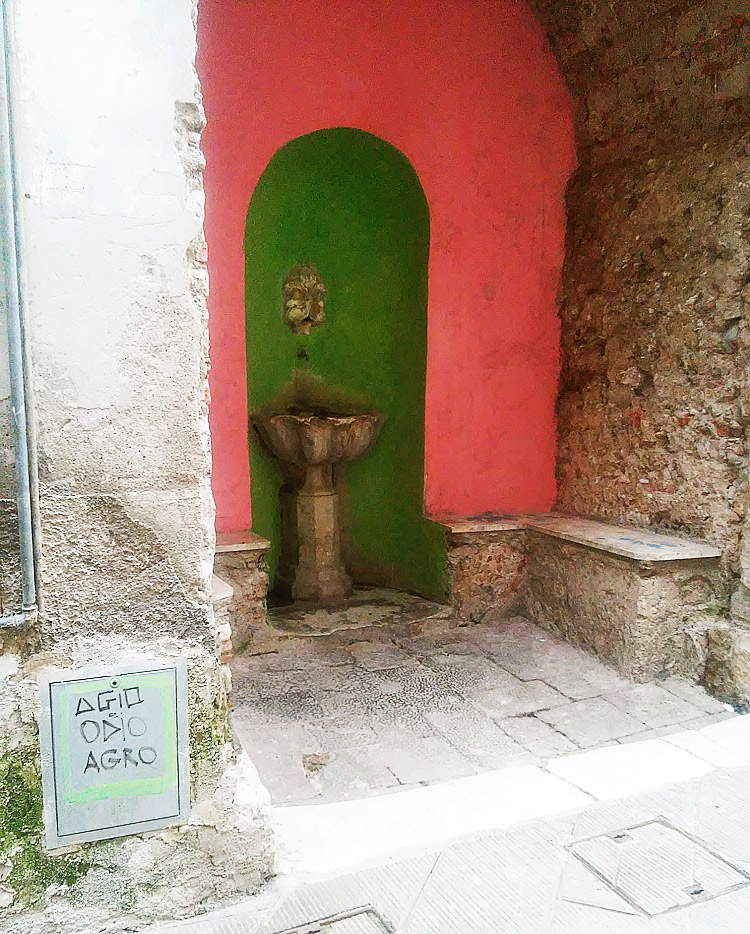Vandals out of desperation. Painting to save us from degradation?
The street artist who decided to cover the niche of a 17th-century fountain in Carrara’s historic center on Saturday night with strong, acidic and totally out-of-context colors, lime green and shocking pink, cannot help but recall what happened in Palermo four years ago. At the time, all the national media talked about the gesture of Uwe Jäntsch, the artist who has dedicated much of his life to highlighting with his interventions the degradation of the Vucciria neighborhood (and who just today, moreover, announced his farewell to the city). In order to bring to everyone’s attention the poor state of preservation in which the 16th-century fountain in Piazza Garraffello (as well as the square itself) was in, Uwe Jäntsch took a bucket of red paint and, documenting the whole thing with film footage and photographs, daubed the marble of the fountain with the words “it sells.” The action was resounding: debates and discussions ensued involving the whole town, distinguished members of the art world took care to make their position known to the public, the authorities intervened, and the deputy mayor manifested his intention (later actualized) to denounce the artist. And shortly thereafter, the fountain was restored, with an intervention that brought it back to life: the marble was cleaned, the water returned to flowing from its spouts, it was even fitted with an iron fence. Just over two years passed between Uwe Jäntsch’s action and the approval of the restoration project. However, even today, there are those who insist on calling the Austrian artist’s operation an “act of vandalism”: perhaps, if it had not been for his intervention (reversible with little effort and enacted with full assumption of responsibility), today we would be talking about a fountain that is still pouring into degradation.
Therefore, a question must be asked: in the case of Uwe Jäntsch, was it an act of vandalism to have made an extreme gesture, dictated by an equally extreme love for the city that welcomed him and by the desperation caused not only by seeing his own square so badly run down, but also by the sad realization that few citizens care that art, history and culture enjoy good health? Here it is: whatever the answer, it is highly likely that a similar mechanism was triggered in the minds of those in Carrara who covered the niche of the fountain with paint and then affixed their signature on the nearby wall (“AGIO / ODIO / AGRO”).
 |
| The fountain on Via Finelli in Carrara after the street artists’ action |
 |
| The fountain on Via Finelli in Carrara before (September 2016, from Google Street View) |
 |
| The fountain on Via Finelli in Carrara after the street artists’ action |
 |
| The fountain in Garraffello square in Palermo: daubed by Uwe Jäntsch in 2014 (ph. credit Uwe Jäntsch), in a state of disrepair in 2015 (ph. credit Uwe Jäntsch), restored in 2017 (ph. credit Eddy Sanfilippo) |
Wanting to hope that the action was carried out with all the necessary precautions and with the least possible impact on the fountain (and seeing it up close, one would say that the street artist was quite scrupulous in this regard), one needs to ask whether it was really vandalism, or whether the gesture can be interpreted as a complaint against the total degradation that had reduced that small marble fountain to a kind of open-air latrine. And above all, we need to ask whether the real vandal is the artist, or those who allowed, through their ignorance, their indifference, their lack of civic sense, their lack of attachment to the city, that the fountain became a dull and decaying shadow of itself.
Cases like those in Palermo and Carrara confront us with the self-righteous little bourgeois within us who is outraged by such a blatant action and cries scandal, but who has become so ugly that he has not noticed the real havoc that has been wrought on those fountains day after day. Of course: today we point the finger at a coat of paint (moreover, thin: underneath we can still see the signs of previous neglect), we talk about legality, we get irritated because the artist should have asked for the appropriate permits (and, incidentally, it takes a good deal of imagination to imagine a street artist sending stamped papers to the superintendence), we wonder if it is then right to daub any cultural asset to denounce shortcomings, neglect and abandonment (obviously the answer is negative). Too bad this is not the point: perhaps, better would be to seize the affair as an opportunity to develop a discussion about the degree of awareness we have of the heritage around us. And that is what Uwe Jäntsch or the Carrara street artist seem to want to tell us. They performed a specific act by taking risks and responsibility, knowing full well that such actions constitute a crime. We, however, must derive from this reason for serious reflection that goes beyond the single ephemeral gesture. Theirs, after all, is a way of offering us an awakening (certainly abrupt and obnoxious, but effective) from our constant daily torpor.
Warning: the translation into English of the original Italian article was created using automatic tools. We undertake to review all articles, but we do not guarantee the total absence of inaccuracies in the translation due to the program. You can find the original by clicking on the ITA button. If you find any mistake,please contact us.




























